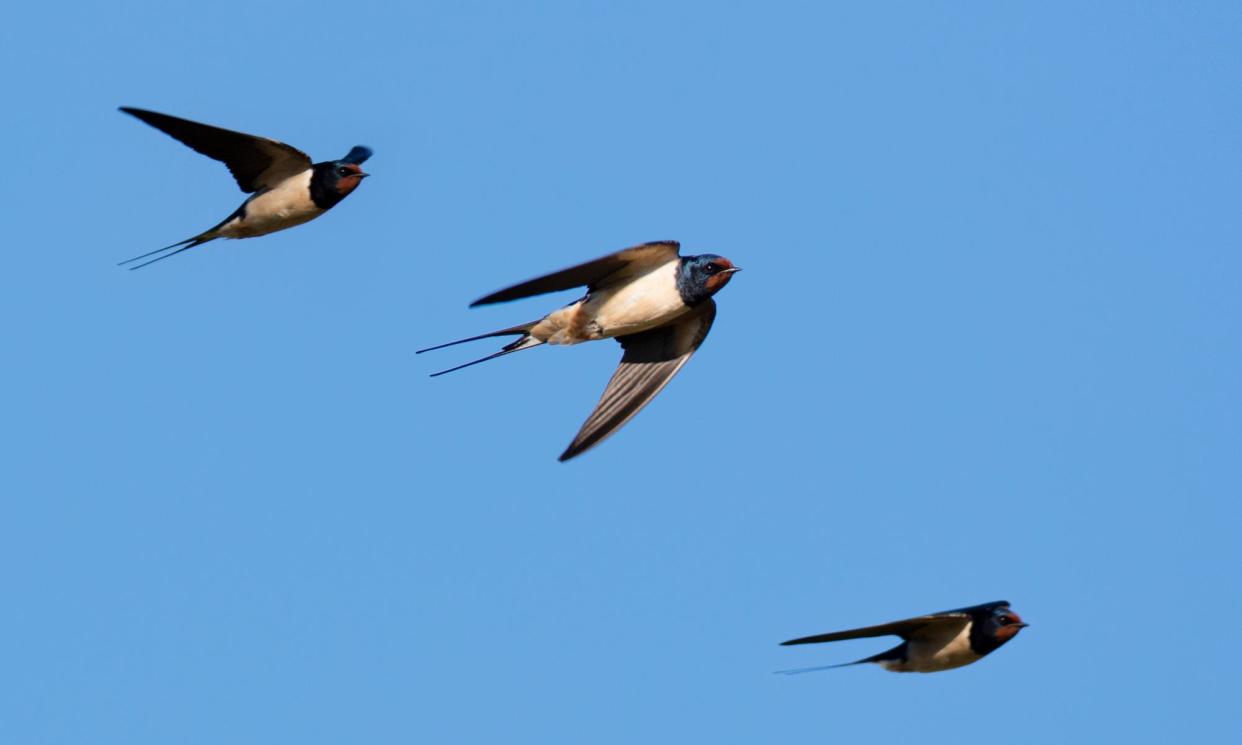Fewer swallows grace summer skies in Britain amid changing climate

The proverb “one swallow doesn’t make a summer”, first attributed to Aristotle, sums up our love of this elegant bird. Swallows visit us for roughly half the year, between April and September, before travelling almost 6,000 miles (10,000 km) to South Africa, where they enjoy a second spring and summer.
But unpredictable weather patterns are now affecting swallows throughout their lifecycle: in Africa, on their journeys south in autumn and north in spring, and during the breeding season here in the UK.
A mixture of wet springs and summer droughts, leading to major falls in numbers of the flying insects on which they feed, has reduced the swallow’s breeding population by almost a quarter in the past 25 years or so.
Anecdotally, many of my farming neighbours here in Somerset tell me they have far fewer nesting swallows than before; some have even lost them altogether. And a recent report confirms that those other familiar denizens of our summer skies, the house martin and swift, have suffered even greater falls in numbers over the past decade.
Once again, our changing climate is to blame; but this comes on top of the huge loss of insects caused by modern industrial agriculture. This is ironic, given that the swallow’s success over the past few millennia began when it adapted to living alongside farmers, nesting in their barns, and feeding on insects attracted by their livestock.


